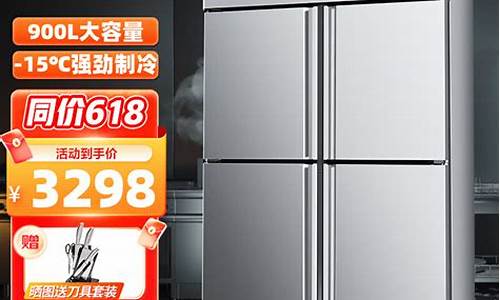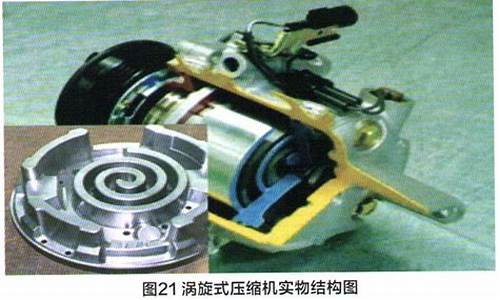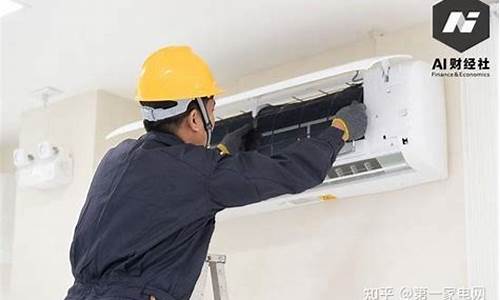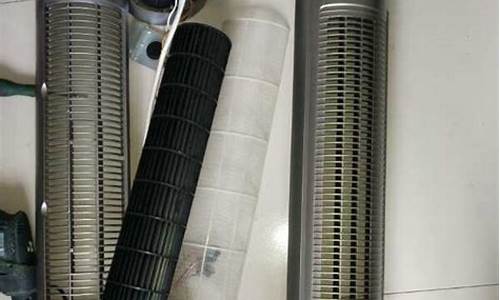您现在的位置是: 首页 > 家电新品 家电新品
日本松下集团_日本松下集团旗下子公司承认
tamoadmin 2024-09-04 人已围观
简介1.“松下”是哪个国家的企业?这个企业主营业务是什么?松下电器产业株式会社(日语:松下电器产业株式会社、まつしたでんきさんぎょう;英语:Matsushita Electric Industrial Co., Ltd.)是日本的大型电器制造公司,总公司设於大阪。松下电器社长大坪文雄于2008年1月10日表示,将在2008年10月将公司名称由松下电器产业更名为「パナソニック」(Panasonic)。同
1.“松下”是哪个国家的企业?这个企业主营业务是什么?
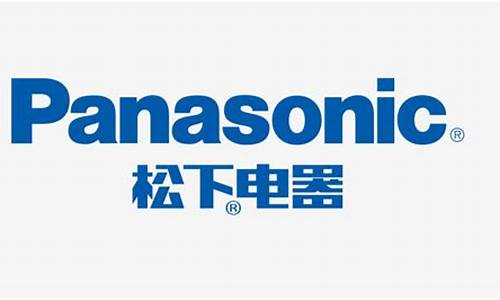
松下电器产业株式会社(日语:松下电器产业株式会社、まつしたでんきさんぎょう;英语:Matsushita Electric Industrial Co., Ltd.)是日本的大型电器制造公司,总公司设於大阪。
松下电器社长大坪文雄于2008年1月10日表示,将在2008年10月将公司名称由松下电器产业更名为「パナソニック」(Panasonic)。同时「ナショナル」(National)商标将在2009年废止,统一使用「パナソニック」。[1]
松下电器於1918年由松下幸之助在大阪创立,创业时做的是电灯灯座。1927年制作自行车用的车灯。1951年松下幸之助到美国,打开了松下电器在美国的市场,最初的产品是电视机,他与飞利浦签定了技术合作合约,将西方的技术带到日本。因此让松下电器从1950年代到10年代有突破性的成长。
松下电器的产品线极广,除了家电以外,还生产数位电子产品,如DVD、DV(数位摄影机)、MP3播放机、数位相机、液晶电视、笔记型电脑等。还扩展到电子零件、电工零件(如插座盖板)、半导体等,间接与直接转投资公司有数百家。
旗下品牌
* National:1922年起创立的品牌,寓意“国民的”。台湾中文名称是“国际牌”。目前仅在日本国内的白色家电产品使用此品牌。National品牌将於2009年停止使用。
* Panasonic(香港译名:乐声,中国大陆译名:松下电器):1955年起创立的品牌。松下电器进军美国时,原有的National品牌在美国已有公司注册,因此创立此品牌。现今为松下电器的主要品牌。
* Technics:为松下的电子琴、音响专用品牌(在香港已经并入 Panasonic)。
* Quasar:14年松下购并美国摩托罗拉公司的家用电子部门时所继承的品牌,仅在北美洲的电子视听产品使用。
* M:为松下出品的电子零件(电容器等)因细小而无法打上品牌全名时所使用的替代标章。
* KDK:为松下出品的空气流动电器,其产品和National一样,每有新的KDK产品推出,National都一定有同功能,同样式的产品推出,这是由於松下电器以两个品牌,去占有两个不同的市场:KDK以电工材料公司为目标,而National以家庭为主。
* Rasonic:(乐信牌)原为香港的信兴集团旗下的子公司信兴电工工程有限公司自行开发的一个品牌。而松下电器中港澳的总代理为信兴集团。於1994年,松下和信兴成立合资公司松下信兴机电有限公司,自此Rasonic成了松下的品牌。
* JVC :(香港曾译为星牌)JVC (Japan Victor Company)成立於1927年,是当时美国的留声机及黑胶唱片的领导者Victor Talking Machine Company的子公司。1930年,JVC生产留声机及黑胶唱片。1932年,JVC开始生产收音机。1939年,展出日本第一台电视机。二战期间,日本公司与外国的合作夥伴断绝关系。1929年,JVC的大部份所有权转移到美国无线电公司(RCA)与胜利音产的合资公司RCA-Victor。直到1953年,JVC由松下电器所有,现在松下电器拥有JVC超过36.9%的股权。
另外,松下电器还有三角形的「三叶松」标章,是松下电器的公司标章,有「坚忍不拔」、「生成发展」、「协力一致」三种含义。
Matsushita Electric Industrial Co., Ltd. (松下电器产业株式会社, Matsushita Denki Sangyō Kabushiki-gaisha?) (TYO: 6752, NYSE: MC) is a Japanese electronics manufacturer based in Kadoma, Osaka Prefecture, Japan. It produces products under a variety of names including Panasonic and Technics.
The company was founded by Konosuke Matsushita in 1918 to sell duplex lamp sockets. In 1927, it produced a bicycle lamp, the first product it marketed under the brand name National. Since then, it has become the largest Japanese electronics producer. In addition to electronics, Matsushita offers non-electronic products and services such as home renovation services.
Matsushita was ranked the 59th company in the world in 2007 by the Forbes Global 500 and is among the Worldwide Top 20 Semiconductor Sales Leaders.
The common English pronunciation is /?mɑtsu?i?t?/, while the proper Japanese pronunciation for the company is /mats(i)ta/.
On January 10, 2008, the company announced that on October 1, 2008 it will change its name to Panasonic Corporation, unifying the Matsushita, National and Panasonic brands under the new corporate name.
Brands and divisions
Matsushita produces electronic products under a variety of names, including:
* Panasonic (home liances for the overseas market, personal electronics, audio/video equipment, microchips, automotive components)
* National (home liances for the Japanese market)
* Nais (components for automated systems, replaced by Panasonic in 2004)
* Quasar (lower-priced televisions, video equipment and liances in the North American market—being phased out)
* Technics (audio equipment)
* Ramsa (professional audio equipment)
* Rasonic (as of 1994, home liances for the Chinese market).
In many computer systems, Matsushita devices identify themselves as "MATSHITA", to fit the limit of 8 characters imposed by Microsoft Windows device handlers.
History
Matsushita Electric Industrial Co., Ltd. in Kadoma, Osaka, Japan. Foreground left: Matsushita Electric House of History; behind: Corporate R&D laboratories
Matsushita Electric Industrial Co., Ltd. in Kadoma, Osaka, Japan. Foreground left: Matsushita Electric House of History; behind: Corporate R&D laboratories
Matsushita was founded in 1918 by Konosuke Matsushita and operated factories in Japan and Asia through the end of World War II, producing electrical components and liances such as light fixtures, motors, and electric irons.
After World War II, Matsushita regrouped and began to supply the post war boom in Japan with radios and liances. Matsushita's brother-in-law, Toshio Iue founded Sanyo as a subcontractor for components after WWII. Sanyo grew to become a compe to Matsushita.
In 1961, Konosuke Matsushita treled to the United States and met with American dealers. Matsushita began producing television sets for the U.S. market under the Panasonic brand name, and expanded the use of the brand to Europe in 19
The company used the National trademark outside of North America during the 1950s through the 10s. It sold televisions, radios, and home liances in some markets. The company began opening manufacturing plants around the world. It quickly developed a reputation for well-made reliable products.
The company debuted a hi-fi speaker in Japan in 1965 with the brand Technics. This line of high quality stereo components became worldwide forites. The most famous product still made today is the SL-1200 record player, acknowledged for its high performance, precision, and durability.
During the 10s, Matsushita further expanded into the U.S. market by purchasing Quasar from Motorola in 14 and buying out MCA-Universal in 1989. Many American employees who transferred over from Motorola felt that they were discriminated against and filed a lawsuit in 1986 after three-quarters of American managers from the Quasar division were let go.
The company then became a major target of anti-Japanese sentiment among workers in the United States. However, the Japanese stock market crash of 1989–1990 caused Matsushita's international power to wane: the company sold many of its foreign assets in the 1990s, including Universal to Edgar Bronfman, Jr. of Seagram's.
In November 1999, the Japan Times reported that Matsushita planned to develop a "next generation first aid kit" called the Electronic Health Checker. At the time, the target market was said to be elderly people, especially those living in rural areas where medical help might not be immediataly ailable, so it was planned that the kit would include support for telemedicine. The kits were then in the testing stage, with plans for eventual overseas distribution, to include the United States.
In recent years the company has been involved with the development of high-density optical disc standards intended to eventually replace the DVD and the SD memory card.
Since the spring of 2004, Matsushita has used Panasonic as its primary global brand. The matsushita.co.jp website now redirects to panasonic.co.jp.
On January 19, 2006 Matsushita announced that, starting in February, it will stop producing analog televisions (then 30% of its total TV business) to concentrate on digital TVs.
On January 10, 2008 Matsushita announced that it intends to change the company name to Panasonic, effective October 1, 2008. The decision is pending on roval at the firm's annual shareholder's meeting in June.
“松下”是哪个国家的企业?这个企业主营业务是什么?
1、创立时间不同:
日松:成立日期是2007年06月25日;
松下:成立时间是1918年。
2、品牌国家不同:
日松:日松是中国的品牌,广州市日松电器有限公司的创办人是总经理马建先生。
松下:松下是日本的一个跨国性公司,在全世界设有230多家公司,员工总数超过290,493人。其中在中国有54,000多人。2001年全年的销售总额为610多亿美元,为世界制造业500强的第26名。
3、公司地址不同:
日松:广州市日松电器有限公司位于广东省广州市白云区秋鹿路100号。
松下:松下总部在日本大阪,在全世界设有230多家公司。
4、产品不同:
日松:以液晶电视为主;
松下:松下经营范围包括家电、数码、办公产品、航空等,现松下在民用产品有70多个产品,小如电动牙刷、剃须刀,大到广播电视设备,以Panasonic ideas for life为口号。
其未在大陆投放的笔记本ToughBook以及VIREA电视手机在日本声誉在外。松下是首个日本手机厂商销量过1亿台的厂商。
松下在国内,主要用于影像器材、音响器材、磁性记录产品、信息/通讯器材、车载设备、电子零部件、半导体、电子管、FA-焊接机、照片用品等方面。
百度百科-松下
百度百科-日松
松下的全名为日本松下电器产业株式会社,它的英文名字叫做Panasonic,是来自日本的著名产品制造商。目前其分支机构已遍布全球,已经成为了一所跨国性质的大公司。
其实松下算得上是比较早进入中国国内的一批外资企业了,我的不少同学朋友以前用的老彩电还有微波炉等就是Panasonic的。而这些产品就是出自松下最主要的业务部门之一的家电部门,此外,松下还经营摄像机、手机等数码产品,打印机、传真机等办公用品。
另外,作为一个综合性的大企业,它还涉足了包括数字网络化事业;节能环保事业;数字通信事业;系统工程设计事业;家用电器事业;住宅设施事业;空调设备事业;工业自动化设备事业及相关事业的元器件、零部件事业;网络、软件事业等产品的研究开发、制造、销售以及售后服务等各个环节。它的公司理念是:?松下创造的是:让生活丰富多彩的?创意?。向全世界的人们提供明天的生活方式提案,为地球的未来和杜会的发展不断做出贡献。?
而除了在民用事业方面铺的很开之外,松下还参与了日本的部分军方生意,主要集中在航空航天板块。目前有报道称,松下参与制造的各类通信设备以及机型均能够达到世界一流水平。
松下创立于1918年,距离今天已经足足有了100多年的历史,而它的经营理念得到了许多企业家的认可甚至是效仿。譬如它们的事业部制度,在总公司能够集权化管理的前提下将各个产品进行细分,而各个事业部能根据自身情况灵活地制定策略。现在不少的企业都在沿用松下的这一管理方针。

